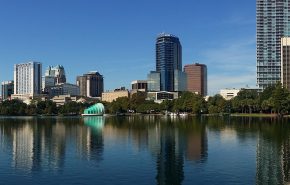A local focus on healthy lifestyles is a growing trend—particularly in the face of increasing national statistics in obesity and diabetes among children and young adults. There are 77 million Baby Boomers reaching retirement age in the next two decades, and an even larger cohort of Millennials with different lifestyle desires than their parents. Healthcare providers are repositioning for this changing landscape to meet the evolving needs of communities. Our population requires a continuum of activity and access to services in order to create “blue zones,” or demographic and/or geographic areas where people live measurably longer, better lives.
In our work as planners, economists, landscape architects, and engineers, GAI has observed several trends that directly affect how our healthcare clients—hospitals, hospital systems, and healthcare architects—think about their campuses and their relationship to the surrounding communities. Below we share five common trends related to the core issues facing these clients today.
1. Integrated Campus Planning
Integrated campus planning recognizes the everyday needs of patients, employees, and visitors and effectively accommodates those needs on campus, while at the same time ensuring the hospital’s clinical mission. This trend mixes clinical space, hospital facilities, and parking with other non-clinical needs, such as hotels, restaurants/food, daycare, recreation/open space, and nearby residences, all within a well-connected environment.
2. Impactful Campus Placemaking
Placemaking understands that a campus’s physical characteristics, such as buildings, streets, and open spaces, have the power to create healing and restorative environments for patients, their families, doctors, and staff. Parks, plazas, and open spaces offer places for repose, exercise, contemplation, socializing, and therapy.
Placemaking understands that a campus’s physical characteristics, such as buildings, streets, and open spaces, have the power to create healing and restorative environments for patients, their families, doctors, and staff. Parks, plazas, and open spaces offer places for repose, exercise, contemplation, socializing, and therapy. They also provide opportunities to use low-impact design strategies that hold and treat stormwater, thus conserving valuable campus real estate and setting a standard for a healthy environment. Campus streets must be designed for cars and pedestrians, with easily-accessible sidewalks, safe pedestrian crossings, cohesive wayfinding, shade-providing trees, and ample seating.
3. Adaptive Facility and Infrastructure Reinvestment
With antiquated structural dimensions, dual-occupancy rooms, and insufficient utility capacity, many hospitals struggle to effectively serve the healthcare needs of today’s patients. In response, healthcare systems across the country are renovating or replacing their facilities to seamlessly adapt to current conditions and future trends in technology and healthcare practice. New construction requires adaptable space designed for changing needs and specialized treatments, while new bed towers feature single-room occupancy with a sense of home, and common areas provide enhanced features for the comfort of families and visitors.
4. Community-Based Healthcare
Community-based healthcare places primary health services closer to patients in the community, while central hospital hubs, or flagship campuses, support those satellite locations. Continued advancements in technology and new models for healthcare delivery have allowed physician alignments and an increasing number of lower-acuity services to be positioned in smaller facilities in established neighborhoods, as well as emerging areas within communities. This trend has created the need for healthcare organizations to strategically evaluate their real estate assets and position within the community.
5. Campus as an Engine for Community Development
Inherently, hospitals are a driving force for leadership within the surrounding community because of their diverse employment base, collaborative partnerships, and capital investment. This trend leverages community reinvestment by capitalizing on hospital campuses as regionally significant centers of technology, employment, research, and education. By supporting non-clinical uses such as residential and retail and advocating for healthy lifestyles and quality of life, healthcare facilities can also be a catalyst to enhanced community character.
In response to a desire for healthier lifestyles everywhere, healthcare systems are trending toward more integrated and efficient solutions, with enhanced attention to quality of place and community fabric. For our healthcare clients and the communities in which they reside, GAI sees a mutual interest and increased appreciation for the thoughtful development of campus property to more effectively deliver healthcare services, improve patient experience, and enhance long-term real estate value.
For more information on the impact of recent healthcare trends or GAI’s healthcare services, contact Kathy Leo, PE, Director, Private Development at 321.436.8175, or Pete Sechler, PLA/AICP, Senior Director, Community Solutions, at 407.423.8398.


